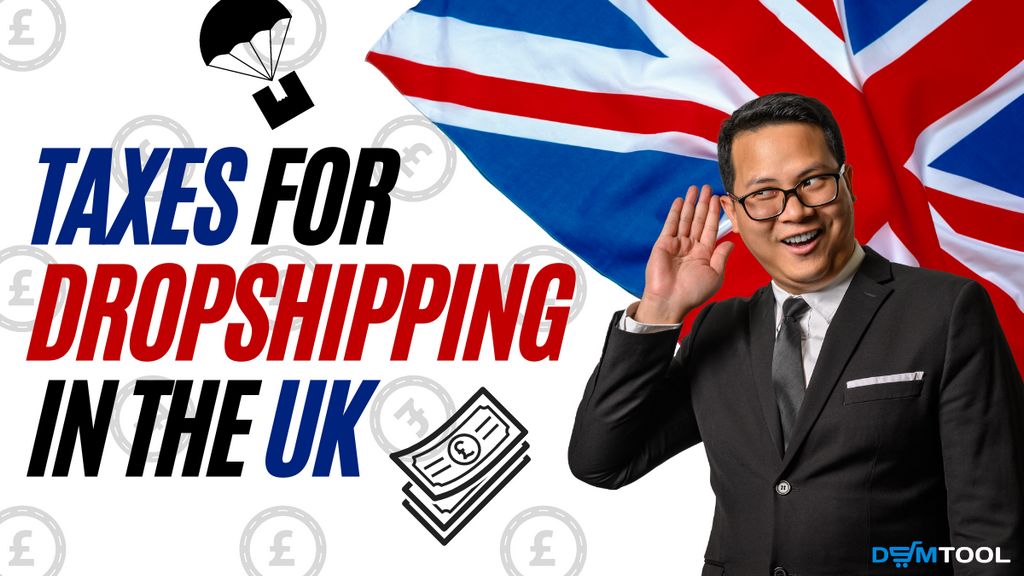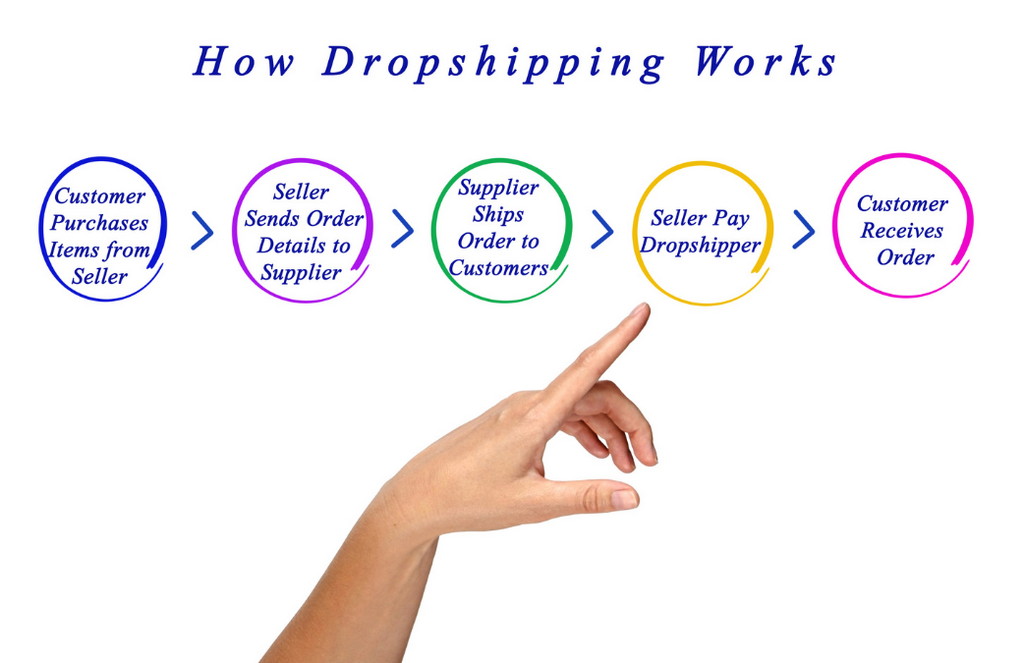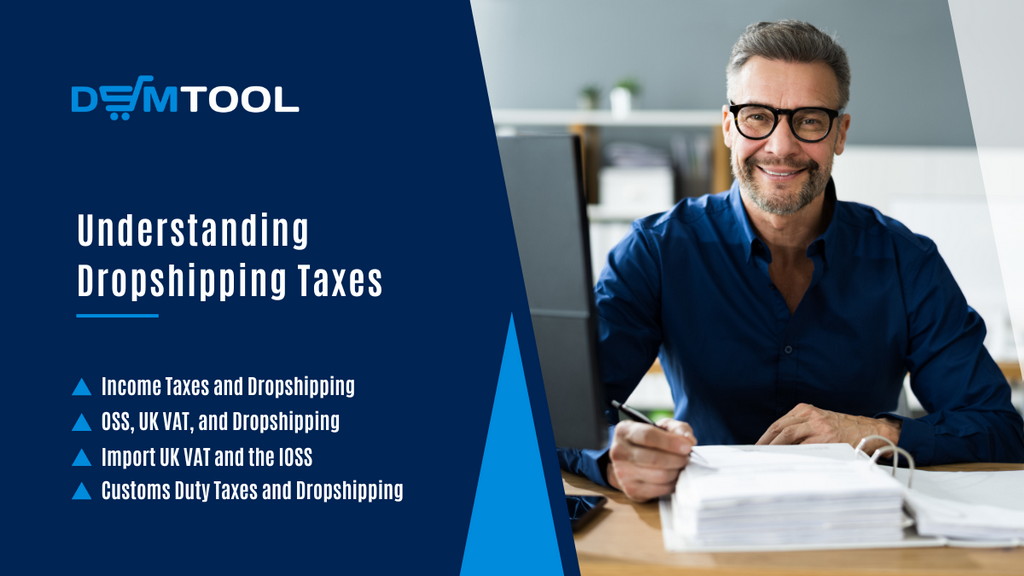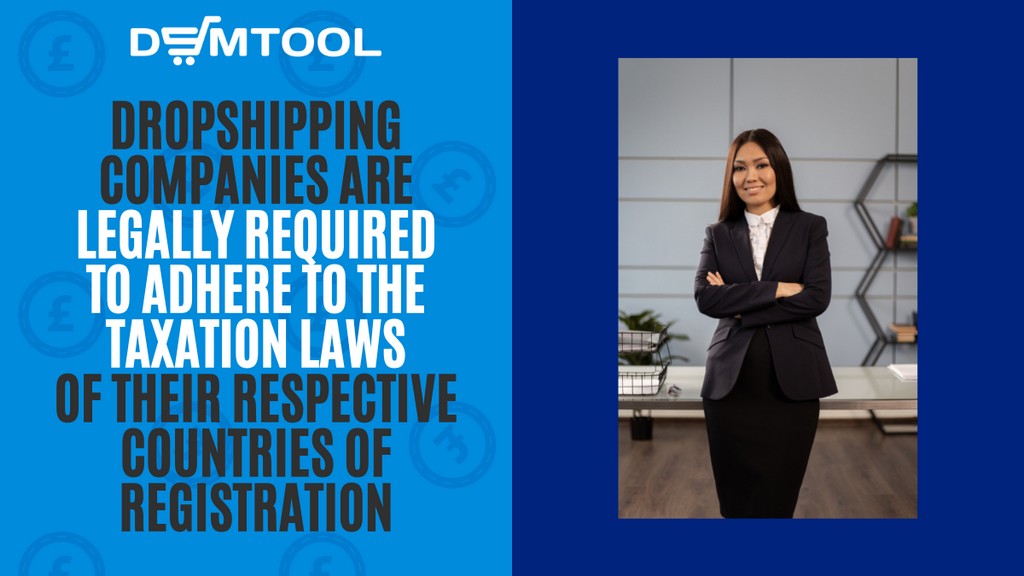
When it comes to taxes, dropshipping is just the same as any online business. Dropshipping taxes are similar to those of other online stores and must comply with local laws and regulations. When doing business in the UK, dropshippers have to pay a few taxes, including UK VAT. So in this article, we will talk about dropshipping and taxes in the United Kingdom.
When it comes to eCommerce business models, dropshipping has experienced an increase in popularity over the last few years. With the ability to sell online via your very own website or through a popular eCommerce platform, people are embracing the dropshipping business approach to earn a little extra income as a side gig or get started in their plans to run their own company.
While the ease and accessibility of dropshipping have empowered people to potentially set up a business and start selling quickly, there’s still some confusion about how the system works and what taxes you’re obligated to pay in the UK for setting up a business in this way.
Below is everything you’ll need to know in order to understand the pros and cons of dropshipping, what it means for the taxes you’ll need to pay, and how to go about ensuring you’re making the most of this business model while staying tax-compliant.
What is Dropshipping?
Dropshipping is essentially a business that fulfills an order from a customer but doesn’t keep the physical products it sells in stock. Instead of owning inventory and stock, they act as the middleman, despite being the seller.
How is this possible? The seller will purchase stock as required from a third-party source in order to fulfill the orders received. This third party in question is usually a wholesaler of some kind. Think of it as a way of selling products online through a website or eCommerce platform that outsources some of the fulfillment aspects to a third party.
Dropshipping stores are able to sell multiple products from various brands, with a wide range of dropshipping suppliers ready to fulfill any orders for those products.
How does the Process of Dropshipping Work?

A standard dropshipping process can be broken down into the following simple steps.
- Step 1: A customer visits a website or eCommerce platform to make a product purchase.
- Step 2: As the seller doesn’t stock the product, the order details are passed on to a wholesaler or supplier (known as a dropshipping supplier).
- Step 3: The seller then pays that dropshipping supplier a fee to prepare and ship the product, keeping the leftover amount as profit.
- Step 4: The dropshipping supplier then prepares the order and ships it out to the customer, completing the order fulfillment process.
Did you know that dropshipping is a form of an online business approach that most sellers practice? Learn more in our What is dropshipping? [Complete Beginners Guide].
What are the Benefits of Dropshipping?
Below are just a few of the main benefits that can come from setting up a dropshipping business.
Cost-effective
By not having to purchase inventory, dropshipping doesn’t require vast amounts of money to invest in the stock you sell. Because of the way dropshipping works, you only purchase a product when a sale has been made, which means that it can be an extremely cost-effective venture.
Flexibility
A successful dropshipping business can be run from pretty much anywhere. All you really need is a strong internet connection. You can run your business from home with a laptop, and as long as you’re keeping in communication with suppliers and meeting the needs of customers, you have the flexibility to make it work around your life.
A wider range of products
Without the worries of unsold stock and inventory, you can offer almost any popular or trending products to your customers. As long as you have a supplier that stocks it, you can sell it, all without having to make any pre-purchases.
What are the Cons of Dropshipping?
While dropshipping may sound enticing, it’s important to understand some of its shortcomings and downsides as well. Below are some of the potential obstacles and limitations of dropshipping.
Lower profits
While dropshipping requires very little overhead capital, it’s a highly competitive area of business. This means a lot of competition from others selling similar products to yours at rock-bottom prices. Regardless of how much effort you put into your customer service, customers are always looking for the best price possible, meaning smaller profit margins.
Shipping issues
Most dropshippers work with several different suppliers to source their products. This is fine in principle, but if a customer decides to order 5 different items, and those items are only available via 5 separate suppliers, you’ll have to deal with each supplier separately and incur 5 different shipping costs in the process.
Responsibility for unexpected errors
Good customer service is crucial. If there are any issues during the process, whether it’s an unfulfilled order, a low-quality product, or even a shipment problem, your business will be seen as responsible, even if there was no fault on your part. It’s then your duty to apologize and try to mend fences as your reputation is damaged through no fault of your own.
Here are the best Dropshipping Suppliers UK you can use for product sourcing in 2022.
Understanding Dropshipping Taxes and UK VAT

While the tax system in the UK may seem complex when it comes to a dropshipping business, there are some serious implications for failing to pay your taxes correctly. For many dropshipping businesses, this means gaining a fundamental understanding of the taxes and charges that it’s legally required to adhere to.
Income Taxes and Dropshipping
Income tax in the UK is calculated based on the amount of money you earn in a given tax year. But as the UK has a banded system that contains different income tax percentages, it’s important to understand which band you fall under. The bands are listed below:
- 0% on taxable income up to £12, 570 per year
- 20% on taxable income between £12, 571 and £50,270
- 40% on taxable income between £50,271 and £150,000
- 45% on taxable income earned over £150,000
Be aware that the above amounts relate to your entire income over the course of a tax year and not just your dropshipping business income. In other words, even if your dropshipping ventures are a side gig, the combined earnings of your full-time job and your dropshipping business will determine your taxable income for the year.
It’s extremely important to keep your tax returns as easy to maintain and manage as possible. And while it may feel complicated, there are government-led ‘Making Tax Digital’ initiatives to streamline and digitize tax systems in order to make Self Assessment, income tax, VAT, and corporation tax matters more simplified via Making Tax Digital software.
Thinking about dropshipping on eBay? Check out our eBay UK Dropshipping guide!
OSS, UK VAT, and Dropshipping
Due to the remote nature of dropshipping, the location of the supplier and buyer is critical to pay attention to. VAT rates can vary for each country and the kind of product sold may also play an important role as well.
In general, VAT is assigned based on the rules and regulations of the location where the item being transported to the customer begins, or the VAT rate of the customer’s location. But with dropshipping, VAT rules are subject to additional changes.
Those changes are due to an EU law that regulates cross-border transactions, which implemented the following changes in July 2021.
- Remote sellers are required to register for VAT in all countries that their customers reside in.
- Remote sellers are subject to a sales volume threshold of EUR 10,000 across the entirety of the EU.
- A One-Stop-Shop (OSS) tool has been developed to simplify these VAT declarations across EU countries.
Import UK VAT and the IOSS
Previously, customers could import items into the EU for personal use and not incur any tax as long as the goods were €22 or less. This was commonly known as Low-Value Consignment Relief (LVCR).
However, as of July 2021, this is no longer the case. The seller now has a duty to collect any VAT at the point of sale if those goods are worth less than €150 and will be imported into the EU by a consumer. VAT needs to be noted by using the tool known as IOSS, or the Import One-Stop-Shop system.
Who is responsible for reporting and collecting that dropshipping VAT? Well, the party that facilitates the sale is the party in charge of collecting the VAT, which they’ll then have a duty to report.
Customs Duty Taxes and Dropshipping
Customs duty is yet another method of tax that needs to be paid up for goods that are entering the United Kingdom. The general rate for customs duty is 2.5% of the item’s cost, but there may be some other special rates for items that cost over the amount of £630.
Exemptions are made for goods with an overall value of £135 or under. However, the overall value of any goods via custom duty is defined as the packaging and the item inside of it, meaning that it may be advisable to send off expensive goods in multiple packages to avoid hefty custom duty fees.
By utilizing the latest eCommerce accounting software for dropshipping, a business can create a more simplified and streamlined tax process.
Final Words About Dropshipping Taxes

Like any other business venture, dropshipping companies are legally required to adhere to the taxation laws of their respective countries of registration. Therefore, it’s vital that your dedication to adhering to overseas procedures doesn’t come at the expense of your UK tax obligations.
Implementing clear, concise, and easy-to-follow accounting procedures can be the difference between success and failure here. Having a meticulous approach to your tax records and embracing the most advanced software possible can contribute to a fruitful dropshipping business that’s on top of its bookkeeping and focused on achieving its goals fully.
Now you know about UK VAT, dropshipping taxes, and other fees in the United Kingdom!
Here are a few articles that should be useful to all eBay UK sellers:
- eBay UK Dropshipping: Start Selling on UK eBay
- Dropshipping Suppliers UK: 20+ Best Sources
- Best Selling Products On eBay UK In 2022-2023
About the author:

Aislinn Carter is a freelance writer living in Hallandale, Florida. She has extensive writing experience covering a number of different verticals including tech & business.

